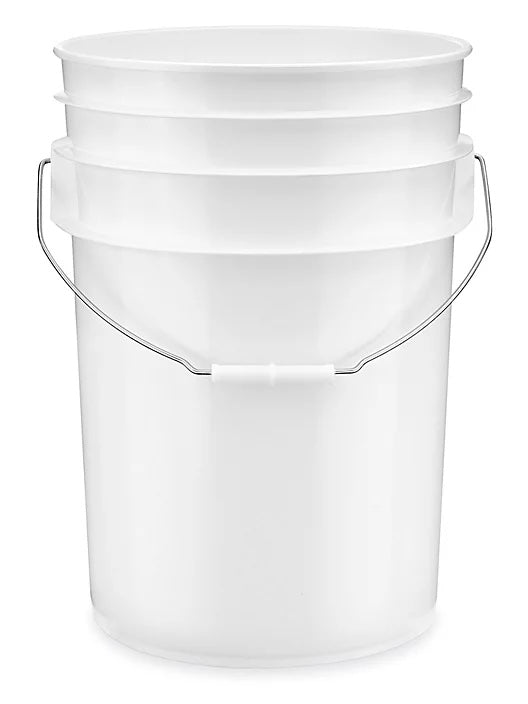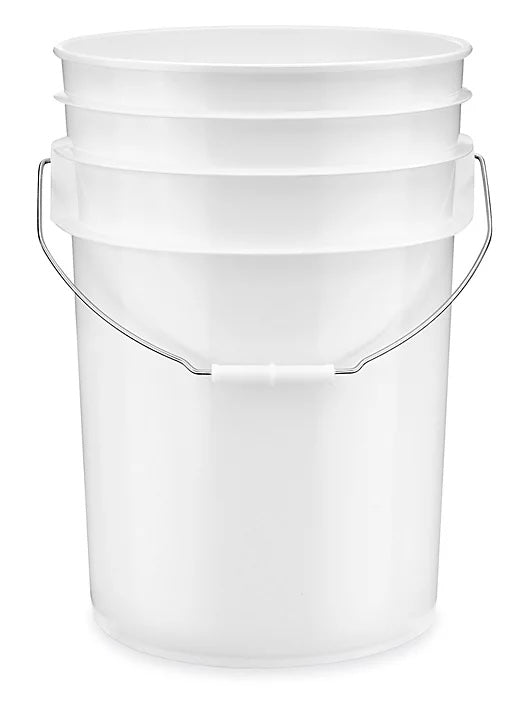1
/
of
1
White 6 Gallon Bucket With Tear Strip Lid
White 6 Gallon Bucket With Tear Strip Lid
Regular price
$17.95
Regular price
Sale price
$17.95
Unit price
/
per
Couldn't load pickup availability
6 Gallon Pail With Tear Strip Lid
HDPE Food Grade
Pail
Our pails are made from High Density Polyethelyne (HDPE). They are food grade, white, and 90 mil. These pails are round to allow for the best airflow around them. They can be stacked 4 high. A 6 gallon pail holds about 45 pounds of small grains such as wheat, rice, and oats.
Tear Strip Lid
To seal your pail with a tear strip lid for the first time, pound the lid on with a mallet or stamp on it with your feet. To open it, remove the tear strip and pry off the lid. The gasket in the lid will form an airtight seal every time you close it.
Tear strip lids fit 3.5 - 7 gallon pails, including both 5 and 6 gallon plastic pails. Pails sealed with tear strip lids are stackable.
Large pails like this one are great for storing bulk grains and other dry foods. You can use this pail as an everyday storage container, or you can store grains and beans in it long-term.
Bulk grain storage requires a little bit of planning, but it is one of the wisest things you can do to save money on your groceries, and be prepared in case of an emergency.
When stored properly, wheat can easily last six to eight years or more, without losing any of its nutritional benefits. The trick to wheat storage (and the storage of any bulk grain for that matter) is to keep out the oxygen, keep it cool, and keep it dry. Six gallon pails are perfect for this.
Here's how to store your wheat long-term with oxygen absorbers, one of the easiest and most effective ways to store grain.
1. Assemble all the pails you'll be filling with grain and the grain itself. Once you open your package of oxygen absorbers, you'll need to use them all within about 15-20 minutes because they start working as soon as you open the packaging. If you will have extra oxygen absorbers, you can store them in a glass mason jar with a tight fitting lid and use them later.
2. Label each pail.
3. Next, you'll need to figure out how many oxygen absorbers to add. This is calculated based on the volume of the pail and the size of the pieces you'll be storing (i.e. small, dense grains like wheat or larger beans). For storing wheat, here's what you'll need for each pail:
For a 6 gallon pail of wheat, use 1,000 to 2,000 cc of oxygen absorber packets.
For a 5 gallon pail of wheat, use 1,000 to 1,500 cc of oxygen absorber packets.
For storing beans, which are less dense and have more air space between them, double these amounts.
Don't be afraid to use a bit more than the recommended amounts of cc's, but do not use less.
4. Put approximately half the oxygen absorber packets you'll use for each pail into the bottom of each pail. Then fill the pail about half way. Now add the rest of the oxygen absorber packets and fill the pails with grain leaving about an inch of space at the top. Fasten the lid on and you're done.
Storage Room
Ideally, the room you use for wheat storage should be no warmer than 65 degrees, at least most of the time. But since most of us don’t have a room that cool, be sure to write the date on your pails so you can use up the oldest wheat first, and replace your storage supply as it dwindles.
If you keep your wheat in a basement or outbuilding, set the pails on pallets or boards to avoid direct contact with concrete and increase circulation.
Share


